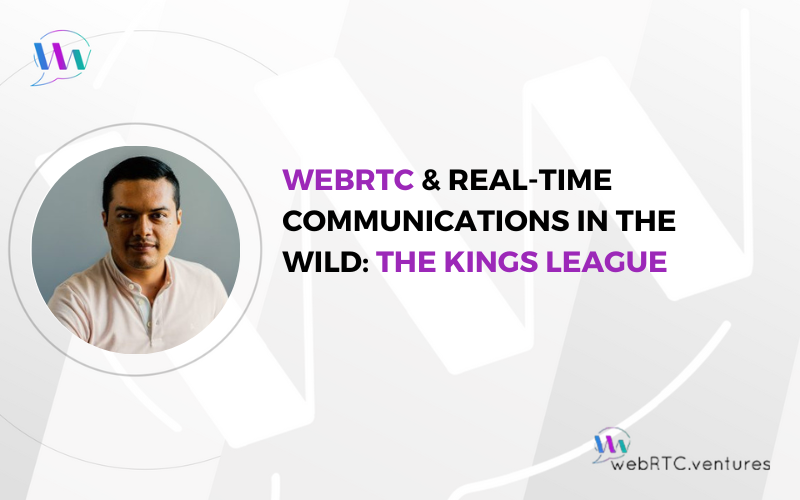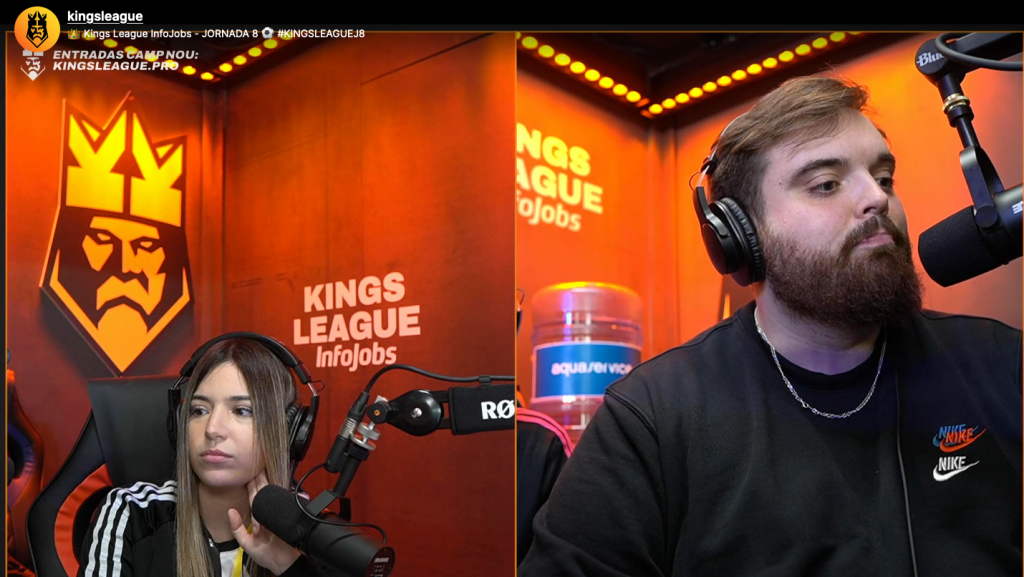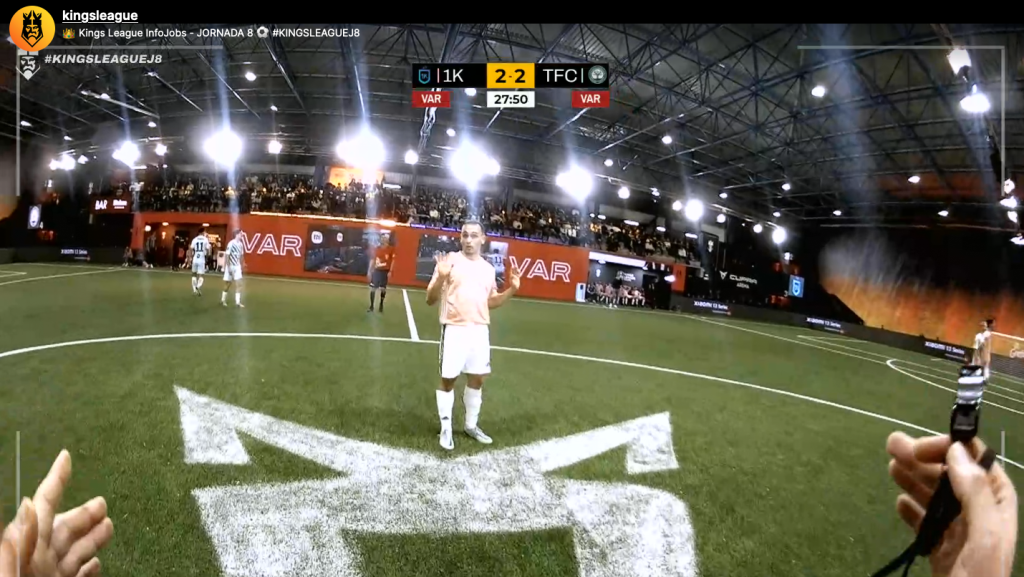When you think about use cases for WebRTC and real-time communication technologies, the first things that usually come to mind are video conferencing and chat. These are indeed great examples of what you can do (and we can help you build), but there are many other use cases and industries that can benefit from these technologies.
A great example is sports. The Kings League is a new soccer tournament that combines the excitement of soccer with the interaction capabilities of live streaming. It’s rapidly breaking its own records, with each round bringing in double or triple the audience than the one before it.
In this post, we will take a look at the real-time capabilities that make this league stand out and explain how WebRTC powers them. We hope to inspire new ideas that can benefit your industry, too!
What is the Kings League?

The Kings League is a 7-on-7 soccer tournament held in Spain. It’s led by former successful players like Gerard Piqué, Iker Casillas and Sergio ”Kun” Agüero, along with well-known Twitch streamers like Ibai Llanos, TheGrefg and JuanSGuarnizo. They act as presidents of the 12 participant teams.
Applications were open to both new and experienced players. After tryouts, players were selected by a draft. Additional seasoned players were invited by each president personally.
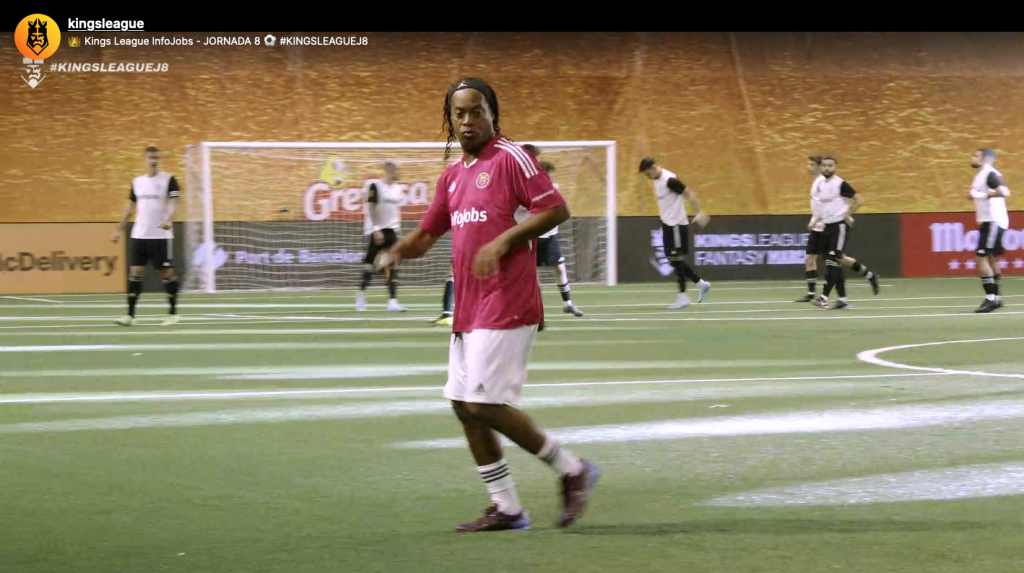
New rules were created to amp up the entertainment value. These include a tie-breaker penalty shootout, the allowance of handballs for throw-ins, unlimited substitutions, and the implementation of special “secret weapons.”
What really makes the league different: live streaming and real-time interaction. With 800,000 viewers on average and more than 20 millions views in 48 hours, the Kings League is the living proof that real-time capabilities are a powerful tool to engage audiences and help in the success of a project. It takes place on Twitch, where in January 2023 it reached the #1 position above other channels (including President TheGrefg’s channel and popular gaming channel, xQc.)
Let’s see what real-time features are being used by the Kings League and how you can implement something similar in your project using WebRTC.
- Remote Collaboration
- Interactive Live Streaming
- Large Scale Live Streaming
- Recordings & Video-on-Demand (VOD)
Remote Collaboration
Some team presidents do not live in Spain where the tournament is held, and they don’t need to! The format of the league allows them to join remotely, by design.
Presidents from remote locations join the league’s streams through video conferencing. For every event, there are big screens that show the remote feeds.
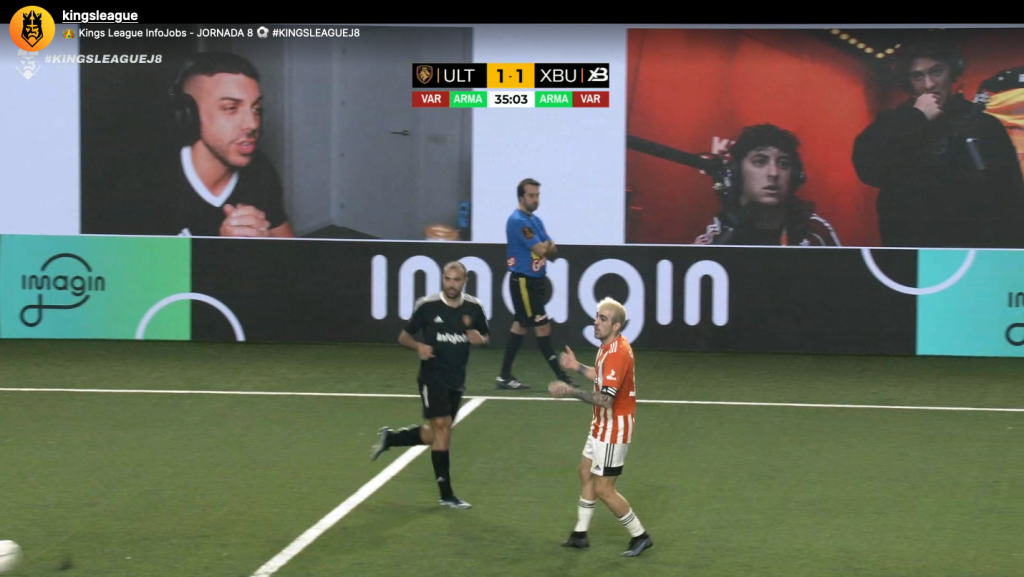
The audience also collaborates through polls in the league’s social media and on the event live chat. Polls ask about thoughts on new rules, choice of game MVP, likely winner, and more.
WebRTC is a perfect fit for both the video conferencing and the polling that supports this remote collaboration. The best part is that WebRTC is already bundled in most modern browsers, so there’s no need to install additional software or worry about multiple devices. WebRTC also supports arbitrary data which can be used to run real-time polls to empower your users.
Interactive Live Streaming
We said it was coming in 2015 and now we see it: the future of streaming media is here and it’s interactive. The Kings League is a perfect example. Interactive Live Streaming implies heavy interaction and participation of the audience, to the point of influencing what happens in the stream.
The Kings League was designed to be streaming-friendly, with special cabins where the presidents live stream during the matches. The audience supports their favorite team in the chat and interacts with their favorite president directly on their streams.
Multiple cameras follow the action in the field. Even the referee has its own POV camera.
Coaches and referees also have their own microphones.This allows viewers to be part of every aspect of the game, from the motivational speech between periods to instructions provided to players. They can put themselves in the position of the referees and understand the reasoning behind their decisions.
This changes the experience of watching a soccer game and makes it more immersive and interactive. The audience is part of the game.
WebRTC provides a browser-native approach for live-streaming capabilities. Thanks to its sub-second latency, viewers can follow the content of the stream near-real time.
Large Scale Live Streaming
Live streaming is one thing. Live streaming to an audience in the hundreds of thousands is its own beast. This is all happening in the main Twitch channel and on the team presidents’ private streams.
In terms of technology, the underlying infrastructure must have the ability to support large numbers of viewers and concurrent streaming sessions.
Streaming protocols like HLS and RTMP can be used in conjunction with WebRTC to increase capacity when sub-second latency is not a strict requirement. The newest additions, WHIP and WHEP, provide the missing piece that WebRTC was lacking when it comes to live streaming/broadcasting. They provide HTTP endpoints that can be offloaded to Content Delivery Networks the way other streaming protocols do.
This opens supporting large audiences as HLS does, while keeping sub-second latency. Cloudflare, for example, does it for its Stream service to support what they call, “WebRTC live streaming to unlimited viewers, with sub-second latency.”
Recordings & Video-On-Demand (VOD)
Another important feature that the Kings League inherits from its streaming-friendly format on Twitch is that matches and out-of-the-field streams are recorded. WebRTC applications take advantage of an intermediate media server for enabling recordings of the stream that can later be accessed on demand. This enables viewers that can’t join live to be also part of the action. And, of course, all viewers can re-watch their favorite plays and goals.
Conclusion
The benefits that real-time capabilities and WebRTC provide truly go beyond video conferencing and chats applications. The Kings League has taken advantage of this in creating a modern soccer tournament that relies on interactivity and participation. This is made possible through real-time capabilities such as interactive live streaming, remote collaboration, large scale live streaming, and recordings & video-on-demand.
If you also want to take advantage of the benefits provided by real-time capabilities and WebRTC for your industry, contact WebRTC.ventures, the experts in WebRTC integration and development!
